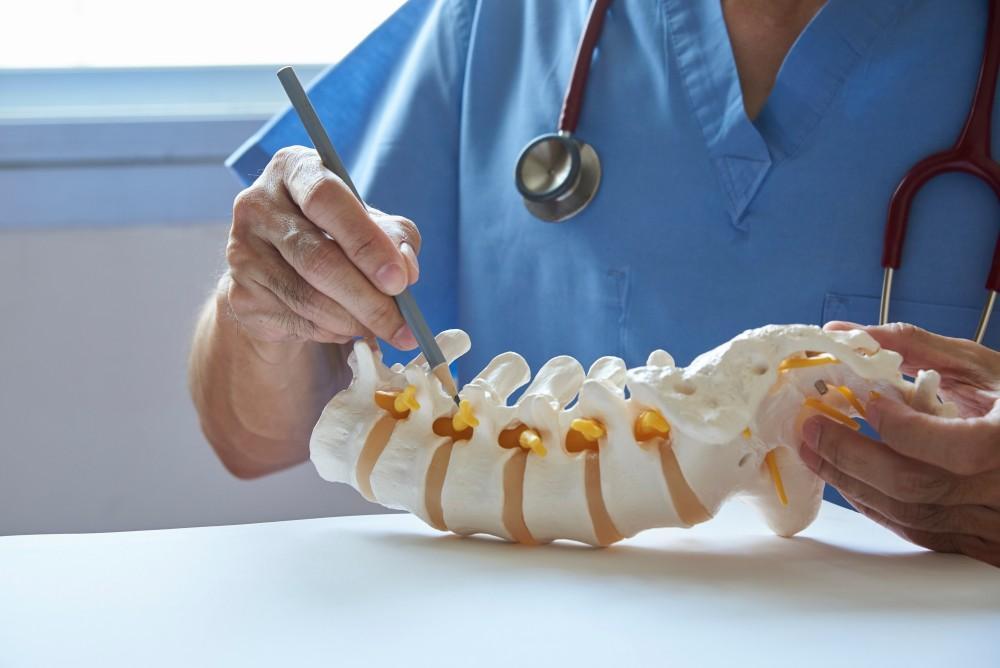
4 Conditions that Respond Well to Robotic Surgery

At Vertrae®, with offices in Dayton and Springfield, Ohio, board-certified neurosurgeon and neurological spine surgeon Dr. Kamal Woods and his team treat a number of spine-related conditions using state-of-the-art technologies, including robotic surgery systems. These systems allow them to map out a surgical plan in great detail, as well as improve the accuracy of each movement during the procedure, leading to better results.
Here are four conditions that respond well to robotic surgery.
What is robotic surgery?
Robotic surgery, also known as robot-assisted surgery, uses a computer-controlled system to position and manipulate surgical instruments. This allows the surgeon to perform complex procedures with greater flexibility, precision, and control than using conventional techniques. Robotic surgery can be used with traditional “open” procedures, but it’s most often associated with minimally invasive surgery — procedures performed through tiny incisions.
Robotic surgery allows surgeons to maintain control of instruments while working through small incisions. Overall control, though, rests with the surgeon, who tells the robot what to do and when. It’s the perfect combination of human judgment and experience with technological precision.
Special surgical planning software allows Dr. Woods to visualize the entire procedure in high-resolution, 3D detail before you even reach the operating room. And intraoperative imaging provides him with a detailed view of your anatomy in real time, guiding him through each step.
4 conditions that respond well to robotic surgery
Robotic surgery is effective at treating a number of conditions, including:
Herniated discs
The bony vertebrae that form the spinal column are cushioned by intervertebral discs, round, pillowy structures that have a tough, outer layer (annulus) surrounding a gel-like inner layer (nucleus). The discs act as shock absorbers for the bones when you move.
A herniated (aka bulged, slipped, or ruptured) disc occurs when the annulus cracks, allowing the nucleus to ooze out. Discs that herniate are usually in an early stage of degeneration, often due to age and routine wear-and-tear, though they may also be caused by injury.
The spinal cord runs through the spinal canal space. When a disc herniates, the nuclear material enters the space, which is too narrow to accommodate it. The material therefore presses on the nerve roots, causing pain. The area where you feel the pain depends on which part of the spine is affected.
Degenerative disc disease (DDD)
Also associated with aging, DDD can occur for two reasons. The first is that the intervertebral discs dry out over time. When you're born, the discs are mostly composed of water, but as you age, they lose that water and get thinner. Thin discs mean less cushioning between your vertebrae and less ability to absorb shocks, leading to pain.
The second is that wear-and-tear and minor injuries over time can cause tiny tears in the annulus, which contains nerves. Any tears near these nerves can produce pain. And the tears can lead to disc herniation, further increasing pain.
Bone spurs (osteophytes)
Bone spurs are smooth, bony lumps that develop near joints, places where two or more bones come together. They develop over a long period of time and may not produce symptoms until they start to impinge on nearby nerves.
Bone spurs form most commonly in people over 60 who have osteoarthritis, an inflammatory condition that results from long-term wear-and-tear of the cartilage cushioning the facet joints that hold the vertebrae together. As the cartilage degrades, bones rub against each other, causing pain, inflammation, and the formation of spurs.
Spinal stenosis
Spinal stenosis is a narrowing of the spinal canal. You can be born with a narrow canal, but most stenosis is caused by changes to the spine, including:
- Bone spurs
- Herniated discs
- Thickened ligaments holding the bones together
- Spinal injuries that cause dislocations or fractures of one or more vertebrae, which then impinge upon spinal nerves
Various imaging tests can determine the exact cause of the stenosis.
If you’re experiencing back pain and need relief, it’s time to come into Vertrae® for a consultation with Dr. Woods. Call us at either location, or book online with us today.
You Might Also Enjoy...


4 Benefits of Outpatient Spine Surgery

Am I a Candidate for Kyphoplasty?

Pulled Muscle vs. Pinched Nerve: What's the Difference?

4 Subtle Signs of Sciatica

